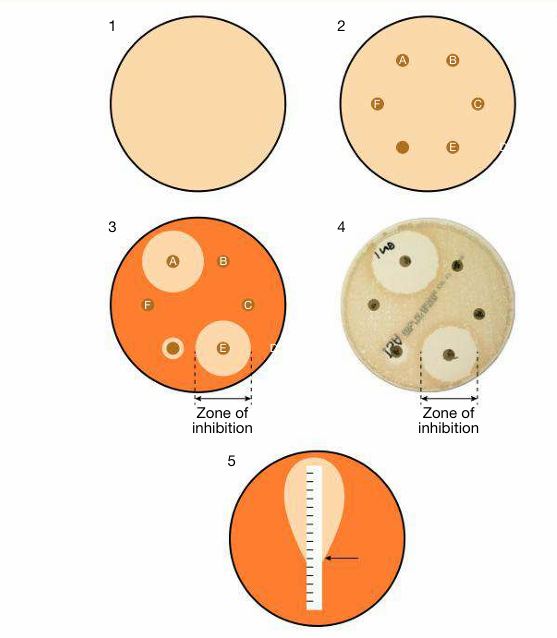
Antimicrobial susceptibility testing
 المؤلف:
Stuart H. Ralston , Ian D Penman, Mark W J Strachan , Richard Hobson
المؤلف:
Stuart H. Ralston , Ian D Penman, Mark W J Strachan , Richard Hobson
 المصدر:
Davidsons Principles and Practice of Medicine
المصدر:
Davidsons Principles and Practice of Medicine
 الجزء والصفحة:
24th Edition , p106-107
الجزء والصفحة:
24th Edition , p106-107
 2025-01-26
2025-01-26
 1032
1032
If growth of microorganisms in culture is inhibited by the addition of an antimicrobial agent, the organism is considered to be susceptible to that antimicrobial. Bacteriostatic agents cause reversible inhibition of replication and bactericidal agents cause cel death; the terms fungi static/ fungicidal are equivalent for antifungal agents, and virustatic/virucidal for antiviral agents. The lowest concentration of the antimicrobial agent at which growth is inhibited is the minimum inhibitory concentration (MIC), and the lowest concentration that causes cel death is the minimum bactericidal concentration (MBC). If the MIC is less than or equal to a predetermined breakpoint threshold, the organism is considered susceptible, and if the MIC is greater than the breakpoint, it is resistant. Breakpoints are determined for antimicrobial agents using a combination of pharma cokinetic and clinical data. The relationship between in vitro antimicrobial susceptibility and clinical response is complex, as response also depends on severity of illness, site of infection, pharmacokinetics, immune status, comorbidities and antibiotic dosing. Thus, although treating a patient according to the results of susceptibility testing increases the likelihood of recovery, it does not guarantee therapeutic success.
Susceptibility testing is often carried out by disc diffusion (Fig. 1). Antibiotic-impregnated filter paper discs are placed on agar plates containing bacteria; antibiotic diffuses into the agar, resulting in a concentration gradient centred on the disc. Bacteria are unable to grow where the antibiotic concentration exceeds the MIC, which may therefore be inferred from the size of the zone of inhibition. The MIC is commonly measured in diagnostic laboratories using ‘diffusion strips’.

fig1. Antimicrobial susceptibility testing by disc diffusion (panels 1–4) and minimum inhibitory concentration (MIC, panel 5). 1 The test organism is spread over the surface of an agar plate. 2 Antimicrobial impregnated discs (A–F) are placed on the surface and the plate is incubated (e.g. overnight). 3–4 After incubation, zones of growth inhibition may be seen. The organism is considered susceptible if the diameter of the zone of inhibition exceeds a predetermined threshold. 5 In a ‘diffusion strip’ test, the strip is impregnated with antimicrobial at a concentration gradient that decreases steadily from top to bottom. The system is designed so that the MIC value is the point at which the ellipse cuts a scale on the strip (arrow). (4) Kindly supplied by Charlotte Symes.
 الاكثر قراءة في التحليلات المرضية
الاكثر قراءة في التحليلات المرضية
 اخر الاخبار
اخر الاخبار
اخبار العتبة العباسية المقدسة


